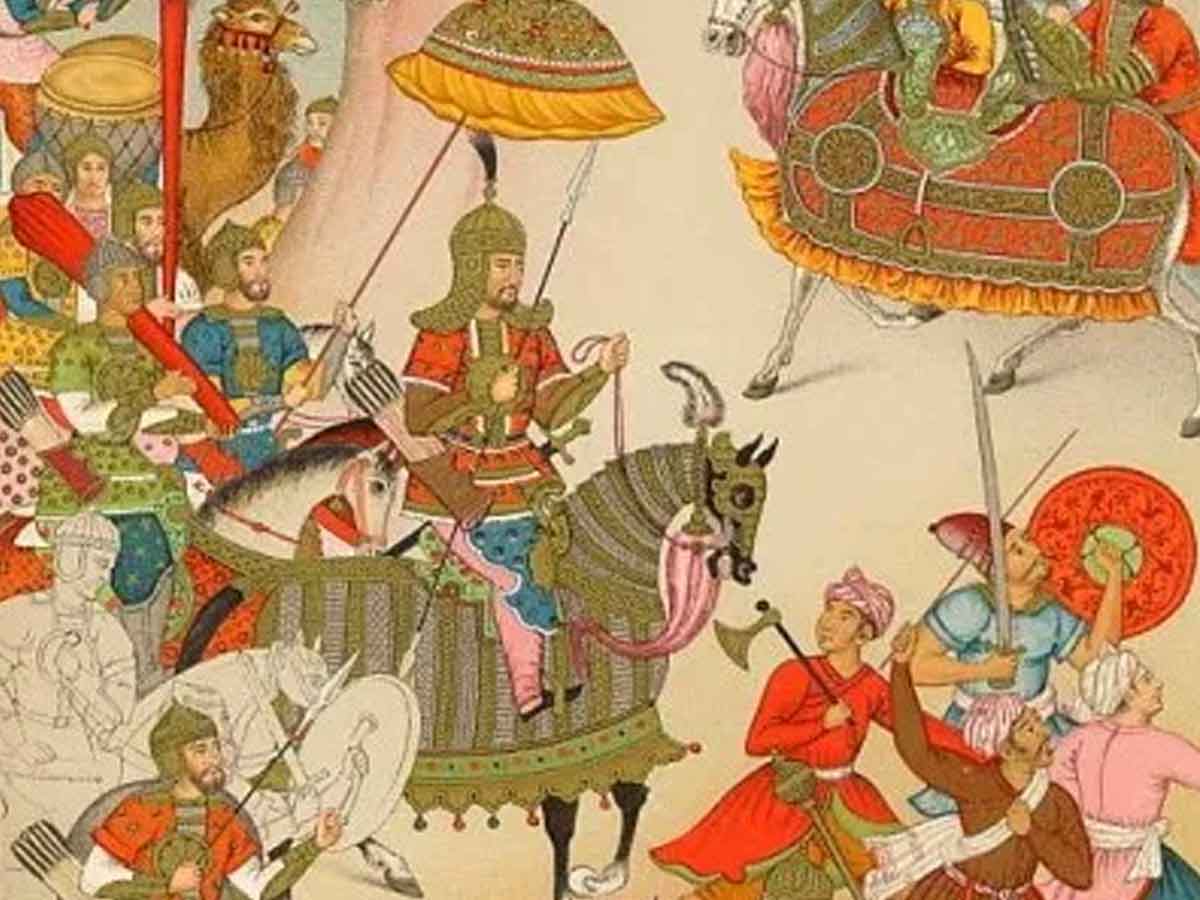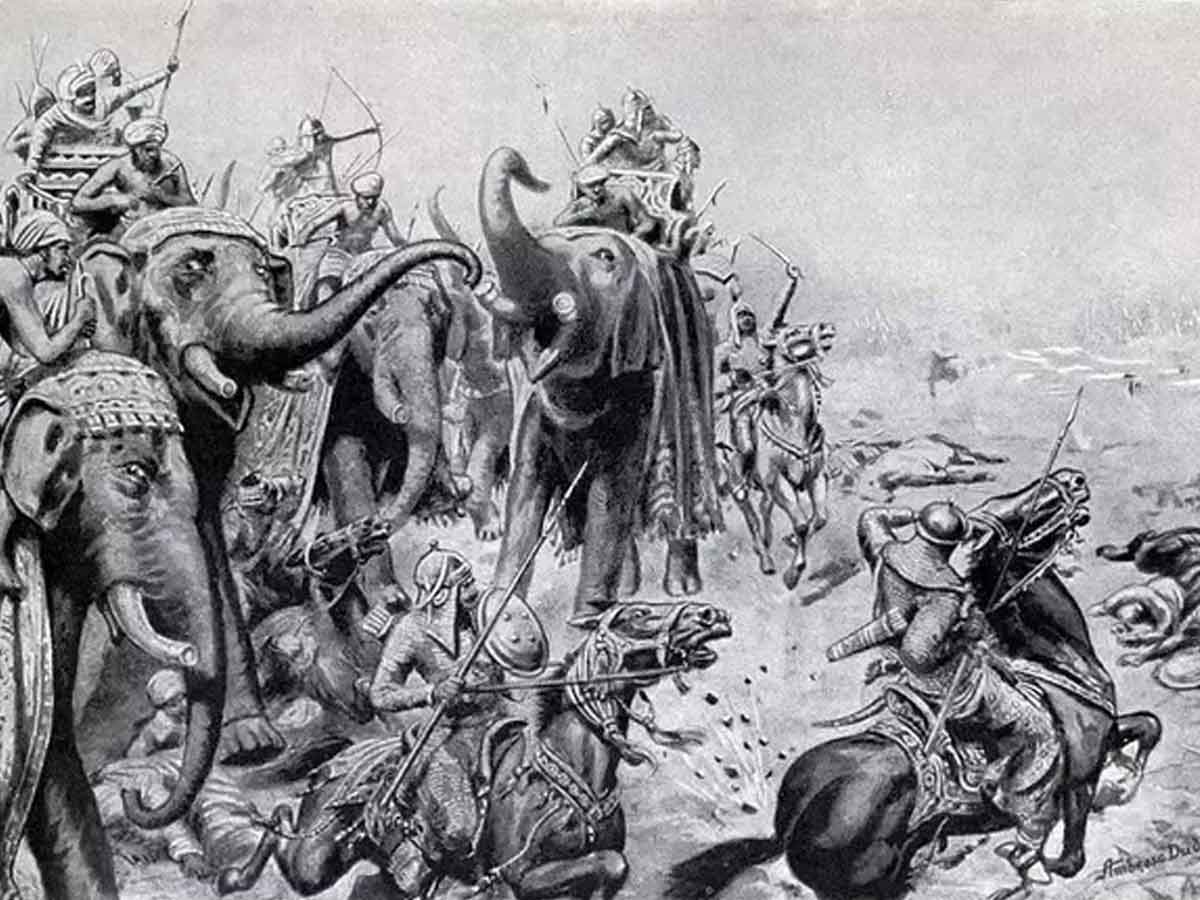The First Battle of Panipat was fought between Babur’s invading forces and the Lodi dynasty on 21 April 1526.
It took place in northern India and marked the start of the Mughal Empire and the Sultanate of Delhi’s end. This was one of the earliest wars in the Indian subcontinent involving gunpowder guns and field artillery, introduced in this war by the Mughals.
Babur paid attention to conquering India after losing Samarkand for the second time when they reached the Chenab banks in 1519. Until 1524, he aimed to extend his rule only to Punjab, primarily to fulfill his ancestor Timur’s legacy because it used to be part of his empire. Sections of northern India were under the rule of Ibrahim Lodi of the Lodi dynasty. Still, the empire was collapsing, and many defectors were present. He obtained invitations from the Governor of Punjab, Daulat Khan Lodi, and Ibrahim, Ala-ud-Din. He sent Ibrahim, a diplomat, saying that he was the legitimate heir to the country’s throne. Still, the ambassador was arrested in Lahore and released months later.
In 1524, Babur left for Lahore, Punjab, but discovered that Daulat Khan Lodi had been pushed out by Ibrahim Lodi’s forces. The Lodi army marched out when Babur arrived in Lahore. Babur set Lahore on fire for the next couple of days in response, then marched to Dipalpur, placing Alam Khan as governor, another rebel uncle of Lodi’s. Alam Khan was overthrown easily by Lodi and fled to Kabul. In response, Babur supplied Alam Khan with soldiers who later entered Daulat Khan Lodi’s empire and attacked Ibrahim Lodi in Delhi with around 30,000 soldiers. He defeated them and drove the army of Alam away. Babur realized that Lodi was not going to allow him to occupy Punjab.

Understanding the size of Ibrahim’s army, Babur dug a trench covered with tree branches to protect his left flank. He secured his right side against the city of Panipat. He put 700 carts tied together with ropes in the middle. There was breastwork for his matchlock guys in every two carts. Babur also ensured that his soldiers had ample room to rest their guns and fire. As a result of its previous use by the Ottomans during the Battle of Chaldiran, Babur referred to this tool as the “Ottoman system.”
When the army of Ibrahim arrived, he found Babur’s army’s approach too narrow to attack. Babur quickly took hold of the situation to flank the Lodi army. At the same time, Ibrahim redeployed his forces to allow for a narrower front. Many of the Ibrahim soldiers could not get into action and fled when the war turned against them. Ibrahim Lodi was killed and decapitated while attempting to retreat. In the battle, 20,000 Lodi soldiers were killed.
Also Read, The Unsung heroes our country has produced
In war, Babur’s guns proved decisive, first because Ibrahim lacked any field cannons and also because Ibrahim’s elephants were terrified by the sound of the cannon, causing them to trample his men.

The Tulguhma and the Araba were strategies used by Babur. Tulguhma meant that the entire army was split into separate divisions, namely the Left, the Right, and the Centre. The divisions of Left and Right were further subdivided into divisions of forwarding and Rear. Through this, a little army could be used from all sides to surround the enemy. Carts (araba) positioned in rows facing the enemy and bound to each other with animal hide ropes were then given to the Centre Forward Division. Cannons were mounted behind them, covered and supported by mantlets that could easily maneuver the cannons. These two strategies made the artillery of Babur lethal.




























